 The Conservation Partners Legacy (CPL) grant program still has funding available for the Fiscal Year 2015 Expedited Conservation Projects (ECP) grant cycle. The Department of Natural Resources reports that $500,000 remains for the final three rounds of ECP funding.
The CPL grant program funds conservation projects that restore, enhance, or protect forests, wetlands, prairies, or habitat for fish, game, and wildlife in Minnesota. The ECP grant cycle was created to provide a simplified application and review process for smaller, standard conservation projects. ECP grant requests may range from $5,000 to $50,000, with a 10-percent match of non-state cash or in-kind funds required. Eligible ECP projects must be on public lands or waters open to all seasons of hunting and fishing.
The ECP grant cycle is open continuously through May 13, 2015, or until all funds are awarded. Apply by Jan. 14 for round three.
For more information, check out the ECP Request for Proposal/Program Manual and visit the CPL Website. Questions? Please email lscplgrants.dnr@state.mn.us.
|
More than 1,300 municipal entities in Minnesota are eligible for state funding to improve their wastewater, stormwater or drinking water systems. The MPCA and partners will be sending notices to eligible entities this month so check your mail for the good news.
Managing wastewater and stormwater is important for the health and safety of any community. It can also make a difference to a community’s growth potential and environmental value, in terms of attracting new businesses, new residents, and additional visitors.
Communities should check to see if they’re on the Project Priority List for 2015. If so, their applications, scoring worksheets, supporting documentation, and plans for wastewater and stormwater projects are due to the MPCA by March 6.
For more information, visit the MPCA Wastewater and Stormwater Financial assistance webpage.
The Minnesota Dept. of Agriculture (MDA) is accepting applications for Sustainable Ag Demonstration grants through Jan. 23, 2015. The program objectives are to research and demonstrate the profitability, energy efficiency, and benefits of sustainable agriculture practices and systems from production through marketing.
Eligible recipients include Minnesota farmers, educational institutions, individuals at Minnesota educational institutions, and non-profit organizations. Priority is given to farmer-initiated projects. All non-farmer initiated projects must show significant collaboration with farmers.
Grants may only be made to applicants in Minnesota for demonstrations on farms in the state. An applicant is eligible to receive only one MDA sustainable agriculture grant at a time. Grantees who complete projects are eligible to receive additional grants to either continue the project or for a new idea.
Grants up to $25,000 are available to fund on-farm research and demonstrations and may include, but are not limited to:
- Enterprise diversification and organic production using traditional and non-traditional crops and livestock;
- Cover crops and crop rotations to increase nitrogen uptake, reduce erosion, or control pests;
- Conservation tillage and weed management;
- Cropping systems to implement integrated pest management systems for insects, weeds, and diseases;
- Nutrient and pesticide management including prevention of entry into water bodies; and
- Energy production such as wind, methane, or biomass.
For more information, see the grant application online or call Jean Ciborowski at 651-201-6217.
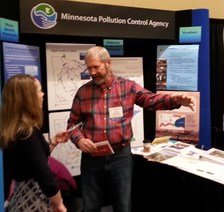 As anyone who attends a convention trade show knows, in-person communication continues to be as important as ever. While the internet, webpages, e-mail, and social media get all the attention, they took a back seat to the buzz of conversation at the 24th annual trade show of the Minnesota Association of Soil and Water Conservation Districts Dec. 8 in Bloomington.
The MPCA joined a host of businesses and government agencies with exhibits and staff at the trade show, connecting with key local partners focusing on conservation and water quality. The MPCA exhibit featured the proposed 7050 rule change adding Tiered Aquatic Life Uses, the statewide nutrient reduction strategy, volunteer water quality monitoring, subsurface sewage treatment systems, and feedlots.
The conference offered a variety of education sessions, recognition, and awards. MPCA stormwater program manager Marni Karnowski presented the Community Conservationist Award to the city of Lindstrom, recognizing its initiative on local stormwater projects. Staff working at the MPCA exhibit included Katrina Kessler, Louise Hotka, Aaron Jensen, Wayne Anderson and Forrest Peterson.
|
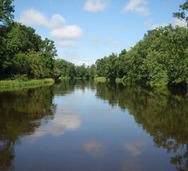 Crow Wing River watershed
The MPCA is seeking comments on a watershed restoration and protection report for the Crow Wing River watershed. The Watershed Restoration and Protection Strategy (WRAPS), summarizes monitoring and water quality improvement projects completed over the past several years, and identifies strategies necessary to restore and protect the Crow Wing River watershed. The MPCA is accepting comments on the report through Dec. 11.
The watershed is located in north-central Minnesota and includes all or parts of Becker, Cass, Clearwater, Crow Wing, Hubbard, Morrison, Otter Tail, Todd, and Wadena counties. Required by the state Clean Water Legacy Act, a WRAPS is a document summarizing scientific studies of a major watershed including the physical, chemical, and biological assessment of the water quality; identification of impairments and water bodies in need of protection; identification of biotic stressors and sources of pollution; and proposed strategies and actions designed to achieve and maintain water quality standards.
Comments may be submitted to Bonnie Finnerty, MPCA, 7678 College Road, Baxter, MN, 56425. For more information, contact Bonnie at 218-316-3897, or toll-free at 800-657-3864.
|
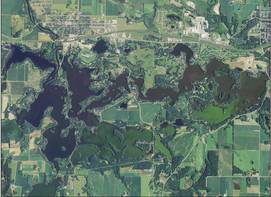
Sauk River chain of lakes
The MPCA is seeking comments on a water quality improvement report for the Sauk River chain of lakes in Stearns County. The report, known as a Total Maximum Daily Load (TMDL), focuses on pollution caused by excess nutrients, mainly phosphorus, throughout the lake chain and its tributaries. The MPCA is accepting comments on the report through Dec. 26.
This report covers 14 lakes and tributaries that make up the Sauk River chain, and four more lakes connected from the south by Eden Valley Creek. Over the past 25 years, a series of locally-driven partnerships have worked to dramatically reduce phosphorus loading by nearly 70 percent in this chain of lakes. But additional reductions are required to meet more recently-developed river and lake site-specific water quality standards. This report calls for phosphorus reductions of 30 to 50 percent more in the Sauk River lakes, and about 80 percent in the Eden Valley Creek lakes.
The TMDL report is part of a nationwide effort under the federal Clean Water Act to identify and clean up pollution in streams, rivers and lakes. A TMDL report is a scientific study that calculates the maximum amount of a pollutant a water body can receive without violating water quality standards.
Comments may be submitted to Greg VanEeckhout, MPCA, 7678 College Road, Baxter, MN, 56425. For more information, contact Greg at 218-316-3896, or toll-free at 800-657-3864.
Written comments
Written comments must include a statement of your interest in the draft report; a statement of the action you wish the MPCA to take, including specific references to sections of the report that you believe should be changed; and specific reasons supporting your position.
|
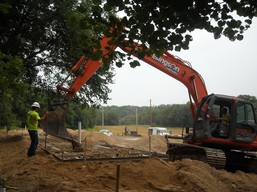 21 small communities. 13 counties. 106 million gallons a year of raw sewage. Those three terms provide a broad picture of the Southeast Minnesota Wastewater Initiative, nicknamed the "Sewer Squad."
Since 2002, the Sewer Squad has worked with small communities in 13 counties to address the need for sewage treatment. With help from the squad, 21 small communities have upgraded their sewer systems, preventing about 106 million gallons per year of raw sewage from entering the rivers and streams of southeast Minnesota, with more projects in the works.
The MPCA is proud to be part of the Sewer Squad, a partnership with the Southeast Minnesota Water Resources Board and Cannon River Watershed Partnership. MPCA staff work closely with Aaron Wills and Sheila Craig, wastewater initiative facilitators who have a knack for pulling together local partners and using an effective strategy for engaging citizens. They actively involve local residents in making choices about how to resolve their wastewater issues.
For this work, the Cannon River Watershed Partnership is receiving an $88,213 grant from the Bush Foundation:
"This collaborative strategy builds widespread trust, effective treatment approaches and local competency around wastewater issues. It also has paid off in user rates that are, on average, much lower than in similar size communities in other parts of the state."
In addition to the Bush grant, one of the wastewater projects is receiving an award for innovation. The Humphrey Institute has selected Oronoco Township in Olmsted County for a Local Government Innovation Award for its efforts to bring wastewater treatment to the Kings Park community on the Zumbro River. Some of the homes discharged sewage directly to the river while others had outdated systems. Financed by a Clean Water Legacy grant, this project will serve 14 homes near the confluence of the river’s middle and south forks north of Rochester.
Currently in its eighth year, the Local Government Innovation Awards recognize outstanding cities, townships, counties, and schools in Minnesota that demonstrate results in improving local services. This program is led by Humphrey School of Public Affairs at the University of Minnesota. Each year, up to 18 local government entities are recognized for their innovative work. Oronoco Township is scheduled to receive the award Dec. 11.
The Sewer Squad started from the Basin Alliance for the Lower Mississippi in Minnesota (BALMM), which the MPCA continues to coordinate with local partners. The catalyst was the Lower Mississippi Regional TMDL for Fecal Coliform, which identified strategies to address point sources through wastewater treatment and nonpoint sources through feedlot fixes and manure management. Those efforts are working to reduce bacteria levels in regional rivers, as told in the Minnesota Water Story, "BALMM a remedy for rivers."
|
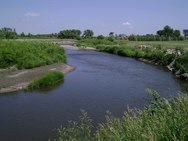 Of the water bodies studied, no lakes and few streams in the Minnesota portion of the Missouri River Basin met state standards for supporting aquatic life and recreation – fishable and swimmable – according to a recent report from the MPCA. The agency completed a report on monitoring and assessment of water quality and aquatic life for four watersheds in southwestern Minnesota that are part of the Missouri River basin.
Separated from the rest of the state by the Buffalo Ridge geological formation, the Rock, Upper Big Sioux, Lower Big Sioux, and Little Sioux watersheds lie partially in Minnesota before spilling across the border to Iowa and South Dakota. The study assessed 93 of 181 stream sections in the four watersheds for aquatic life or aquatic recreation. Of these, only three were considered fully supporting of aquatic life, and one fully supporting of aquatic recreation. Fifty three sections were non-supporting of aquatic life and 31 non-supporting of aquatic recreation. None of the lakes in the Missouri River Basin met the aquatic recreation standard.
The impairments are caused by high levels of bacteria, nitrates and sediment. Due to the many impairments, the MPCA sees a great need for exploration of major stressors to water quality. Improving water quality will require changes on the land draining to the basin, especially reducing pollutants from farming practices. Addressing nonpoint source pollution would benefit from identifying features in watersheds that are more prone to be pathways of contamination, and working with landowners to limit potential contaminants from reaching those sensitive areas.
A 2-page summary of the report is also posted on the MPCA website.
|
|